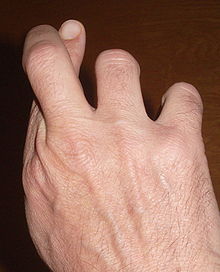
A truce term is a word or short phrase accepted within a community of children as an effective way of calling for a temporary respite or truce during a game or activity, such as tag or its variants. Common examples in English speaking cultures are barley, fainites, crosses, kings and exe(s) in the United Kingdom, pegs and nibs in New Zealand and variants of barley in Australia. In the United States, terms based on time-out have, from the 1950s onwards, largely supplanted earlier common terms based on kings and exe(s). Since the late 1980s time-out has been recorded in other English-speaking cultures besides the US. Examples of use of truce terms are if a child has a stitch or wants to raise a point on the rules of the game.
Traditionally these terms are specific to certain geographical areas, although some may be used by a particular social group such as pax in the UK (used primarily by children attending private schools). To be functional a truce term must be understood and honoured by most of the children playing together.[1]
The most extensive study of the use and incidence of these terms is that undertaken by folklorists Iona and Peter Opie in the UK in their 1959 book, The Lore and Language of Schoolchildren, which mapped the use of truce terms across England, Wales and Scotland.[2] The Opies considered it the most important word in a schoolchild's vocabulary and one for which there was no adult equivalent. There has been little recent research in the UK, but such research as exists indicates that truce terms, including some of those prevalent in the late 1950s, are still in general use.[3][4] Studies conducted since the 1970s in English speaking cultures show that truce terms are also prevalent in Australia, New Zealand, South Africa and the United States with a number of terms deriving from older terms used in the UK, but many not.
The use of a truce term is usually accompanied by a gesture, such as crossed fingers of one or both hands or the raising of thumbs. In the US a T-shape made with both hands (representing time-out) has become prevalent and this gesture is also appearing in other countries.
- ^ Knapp H and Knapp M (April–June 1973), "Tradition and Change in American Playground Language", The Journal of American Folklore, 86 (340), University of Illinois Press on behalf of American Folklore Society: 131–141, doi:10.2307/539746, JSTOR 539746
- ^ Opie, Iona & Peter (1959), The Lore and Language of Schoolchildren, Oxford: Oxford University Press, pp. 141–153, ISBN 0-940322-69-2
- ^ Beckwith I, Shirley R. (1975), "Truce Terms: a Lincolnshire Survey", Local Historian, 11 (8): 441–4
- ^ Roud. K. & S. (1989), "Truce Terms in Croydon, Surrey, 1988", Talking Folklore, 7: 15–20
